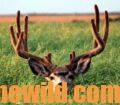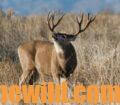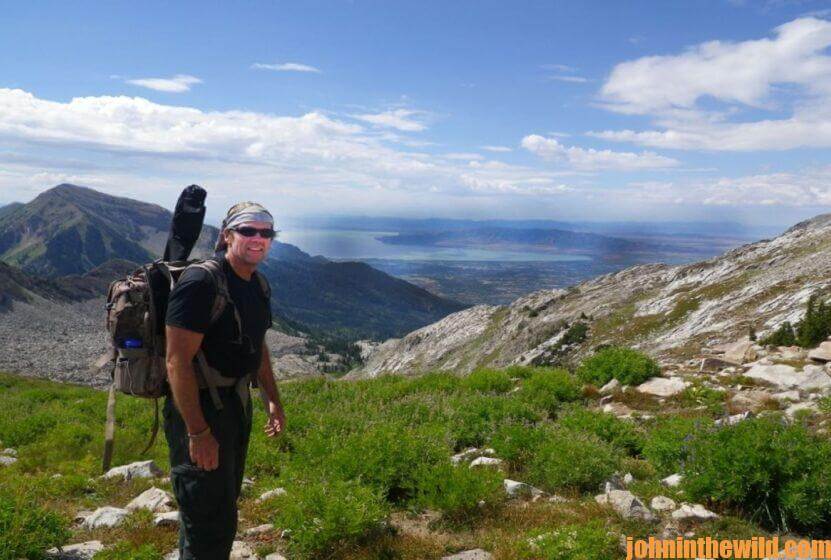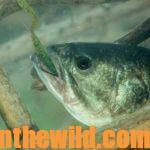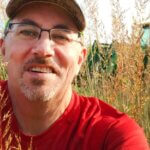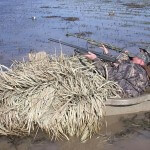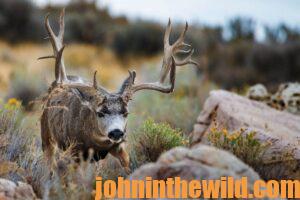 Editor’s Note: Karl Badger of Utah, has been bowhunting for several decades. Badger primarily hunts in Utah, Wyoming, Colorado and Idaho.
Editor’s Note: Karl Badger of Utah, has been bowhunting for several decades. Badger primarily hunts in Utah, Wyoming, Colorado and Idaho.
I have a sore shoulder, so I have to be careful about the bow I shoot. I pull between 60 and 70 pounds and shoot a Muzzy Broadhead (http://www.muzzy.com/). I primarily hunt elk and mule deer. One of the reasons I like hunting with the bow is we have more-liberal seasons for bowhunting in the West than we do for gun hunting. We can hunt mule deer with a bow from August 1 until December 30 in some states.
I like to hunt the Wasatch Front, the main mountain system in northern Utah. To take a mule deer buck up in those remote mountains, you have to work really hard. The Wasatch Front is a wilderness area, and the only way to access it is by foot. You must have a quality pair of boots. I like to hunt wilderness areas, because the chances of encountering a really-big mule-deer buck are greater there than they are where ATVs are permitted.
 I love extreme mountain hunting. There are plenty of good trails in these mountains. For me, the definition of extreme mountain hunting for mule deer is climbing higher than anyone else and being willing to take on the challenge of getting as far away from other hunters as trophy mule deer have to go to survive. I often will hike as few as 3 or 4 miles before I start hunting, but in some instances, I may hike 20 miles. Before I leave a trailhead, I make the decision of how far I’m willing to pack-out the animal’s meat and head if I’m successful. When I go really far into the mountains, I plan on boning the meat and just carrying the head, the antlers and the meat out. Most of the time, I have a partner with me. The person who kills out first has the advantage of a partner to help carry-out the meat.
I love extreme mountain hunting. There are plenty of good trails in these mountains. For me, the definition of extreme mountain hunting for mule deer is climbing higher than anyone else and being willing to take on the challenge of getting as far away from other hunters as trophy mule deer have to go to survive. I often will hike as few as 3 or 4 miles before I start hunting, but in some instances, I may hike 20 miles. Before I leave a trailhead, I make the decision of how far I’m willing to pack-out the animal’s meat and head if I’m successful. When I go really far into the mountains, I plan on boning the meat and just carrying the head, the antlers and the meat out. Most of the time, I have a partner with me. The person who kills out first has the advantage of a partner to help carry-out the meat.
Our mule deer rut starts the first of November. I usually spot the bucks fairly easily, because they’ll be chasing does during the rut. On one particular hunt, I spotted a nice buck chasing does just as the sun was coming up. The place I was hunting had patches of timber, small oak hemlocks and a lot of open space. One of the challenges associated with hunting this area was we didn’t have much vegetation to move through to keep deer from seeing us as we stalked in to take the deer with a bow. I finally was able to get within 30 yards of this nice muley buck. Because he was so interested in the does, I don’t think he ever saw me. The buck presented broadside, and I felt really good about my shot. I watched the buck run down the mountain and pile-up in a small ravine. There’s a real feeling of joy that comes over me when I shoot a buck. But, when I saw that buck run down the mountain and into the ravine, I knew my joy would be short-lived. After boning out the deer, I’d have to climb back up that same mountain with all the meat on my back.
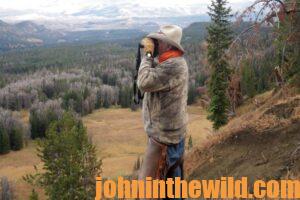 The two essential pieces of equipment for hunting in the mountains are the best boots you can buy and the best pack you can afford. These two items will make getting your deer out much easier and make the trip more enjoyable for you. I use a Horn Hunter Pack made by Sportsman’s Outdoor Products, (http://sophuntinggear.com/) since I can load all the meat plus the horns and head in it, and usually get all the meat and head out in one trip. Make sure your pack allows the weight to rest on your hips and not your shoulders. You’ll need an adjustable waist strap and a sternum strap, as well as an adjustable shoulder harness to position your pack where it’s easier to carry and will keep you more balanced.
The two essential pieces of equipment for hunting in the mountains are the best boots you can buy and the best pack you can afford. These two items will make getting your deer out much easier and make the trip more enjoyable for you. I use a Horn Hunter Pack made by Sportsman’s Outdoor Products, (http://sophuntinggear.com/) since I can load all the meat plus the horns and head in it, and usually get all the meat and head out in one trip. Make sure your pack allows the weight to rest on your hips and not your shoulders. You’ll need an adjustable waist strap and a sternum strap, as well as an adjustable shoulder harness to position your pack where it’s easier to carry and will keep you more balanced.
Once I got the deer boned-out and his horns strapped in my back pack, I had a 4-mile hike back to my vehicle. I shot the buck in the morning, and I actually had to make two trips to get all the meat out. Hunters often believe they save time and energy by overloading their packs and carrying all the meat out at one time. However, if you have mountains to climb up and down to get back to your vehicle, you’ll enjoy your hunt more if you make two trips to carry all your meat and antlers out if needed. When I got the first load of meat back to my truck and into my cooler, I ate a sandwich and rested a little while. Then, I went back and got the rest of the meat. Since I had shot that deer early in the morning, I got back to my truck before 1:00 pm with the first load of meat. After resting and eating, I was able to get the second load out just before dark.
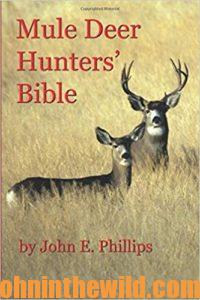 I enjoy the hike, the scenery and just being out in nature. So, I take my time as I go in and out. I try to make getting my meat back to my vehicle an enjoyable part of the trip. As I walked through the last leaves of fall, I thought about how lucky I had been to go hunting and bag a deer with my bow. I didn’t get in too big of a hurry. I wanted to enjoy every step I took.
I enjoy the hike, the scenery and just being out in nature. So, I take my time as I go in and out. I try to make getting my meat back to my vehicle an enjoyable part of the trip. As I walked through the last leaves of fall, I thought about how lucky I had been to go hunting and bag a deer with my bow. I didn’t get in too big of a hurry. I wanted to enjoy every step I took.
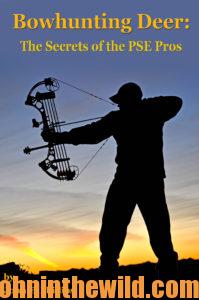 To learn more about mule-deer hunting, check out John E. Phillips’ book, “Mule Deer Hunter’s Bible,” available in Kindle, print and Audible at https://amzn.to/2Kg62w5. You may have to copy and paste this click into your browser. (When you click on this book, notice on the left where Amazon allows you to read and hear 10% of the book for free). On the right side of the page and below the offer for a free Audible trial, you can click on Buy the Audible with one click. Also check out “Bowhunting Deer: The Secrets of the PSE Pros,” available in Kindle and print at http://amzn.to/VBr1qW.
To learn more about mule-deer hunting, check out John E. Phillips’ book, “Mule Deer Hunter’s Bible,” available in Kindle, print and Audible at https://amzn.to/2Kg62w5. You may have to copy and paste this click into your browser. (When you click on this book, notice on the left where Amazon allows you to read and hear 10% of the book for free). On the right side of the page and below the offer for a free Audible trial, you can click on Buy the Audible with one click. Also check out “Bowhunting Deer: The Secrets of the PSE Pros,” available in Kindle and print at http://amzn.to/VBr1qW.
Tomorrow: Karl Badger – Wilderness Mule Deer Hunts

